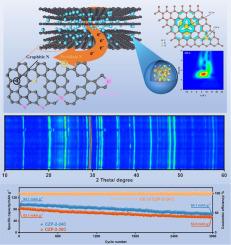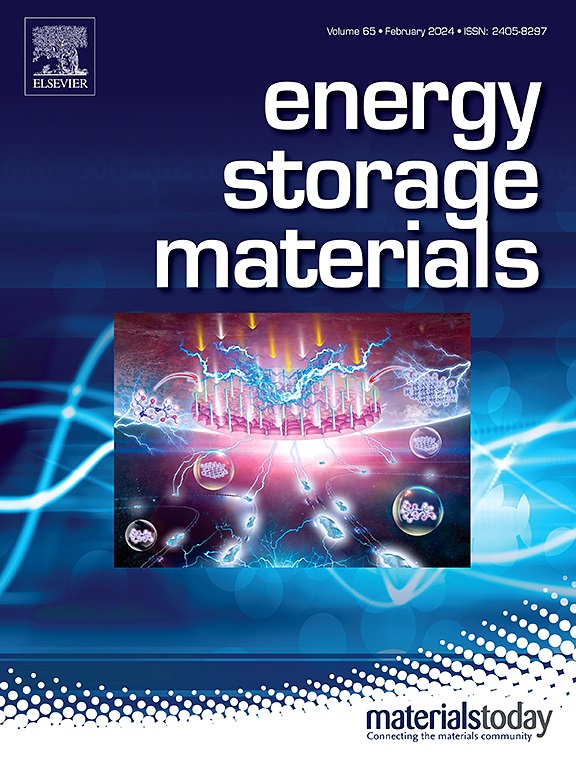Charge accumulation in carbon skeleton inducing oxygen vacancy-rich Na3V2(PO4)3 with multielectron transport property for high performance sodium ion batteries
IF 18.9
1区 材料科学
Q1 CHEMISTRY, PHYSICAL
引用次数: 0
Abstract
Traditional carbon-based modification methods focus on the electronic conductivity of Na3V2(PO4)3(NVP), rather than affecting its internal crystal structure. Herein, abundant C18H19ClN4(CZP) is introduced NVP to generate synergistically modified N/Cl co-doped carbon skeleton. DFT calculation illustrates after N/Cl atoms occupy C sites, charges accumulate at N/Cl site. The enriched charge is relatively attractive for O atom, which induces the formation of O vacancy inside NVP. Significantly, the offset of O atom lengthens the P-O and V-O bonds, contributing to the expansion of VO6 and PO4 framework and thus enlarging the construction frame. Confirmatively, XAFS analysis demonstrates the elongation of V-O bond. Furthermore, ex-situ XPS verifies the contents of pyridinium and pyrrole nitrogen increase during electrochemical process to improve the electronic conductivity. Cl- can act as carrier to elevate the charge transfer and reduce the resistance during Na+ de-intercalation. The notably improved kinetic characteristics boost a higher voltage platform at 3.9 V derived from V4+/V5+. Ex-situ XRD indicates CZP-2 possesses great cyclic reversibility with near-zero strain property. Consequently, CZP-2 achieves superior rate capability and cycling performance in half and three type full cells (CZP-2//CHC, CZP-2//FeSe2 and CZP-2//CZP-2). Moreover, ARC measurement verifies CZP-2 has a higher thermal runaway temperature with better thermal stability.

求助全文
约1分钟内获得全文
求助全文
来源期刊

Energy Storage Materials
Materials Science-General Materials Science
CiteScore
33.00
自引率
5.90%
发文量
652
审稿时长
27 days
期刊介绍:
Energy Storage Materials is a global interdisciplinary journal dedicated to sharing scientific and technological advancements in materials and devices for advanced energy storage and related energy conversion, such as in metal-O2 batteries. The journal features comprehensive research articles, including full papers and short communications, as well as authoritative feature articles and reviews by leading experts in the field.
Energy Storage Materials covers a wide range of topics, including the synthesis, fabrication, structure, properties, performance, and technological applications of energy storage materials. Additionally, the journal explores strategies, policies, and developments in the field of energy storage materials and devices for sustainable energy.
Published papers are selected based on their scientific and technological significance, their ability to provide valuable new knowledge, and their relevance to the international research community.
 求助内容:
求助内容: 应助结果提醒方式:
应助结果提醒方式:


